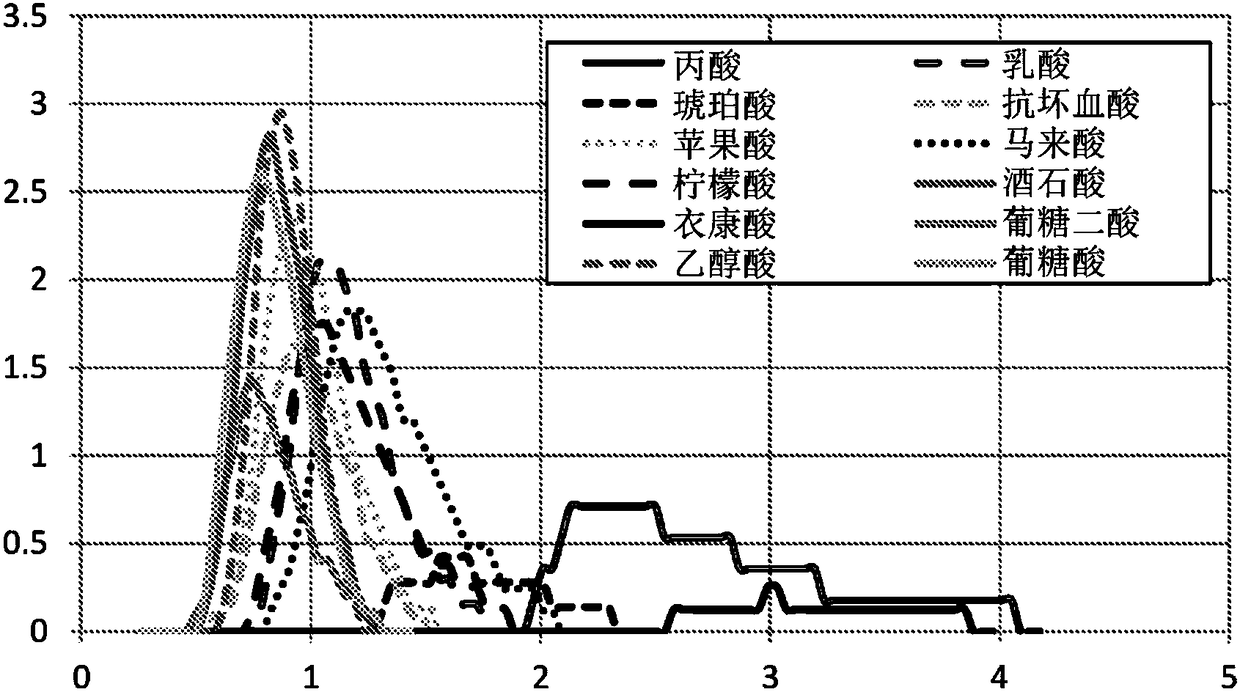Chromatographic separation of organic acids using polymeric macroporous adsorbent
A chromatographic separation and organic acid technology, applied in solid adsorbent liquid separation, separation/purification of carboxylic acid compounds, separation methods, etc., can solve problems such as difficult separation of organic acids
- Summary
- Abstract
- Description
- Claims
- Application Information
AI Technical Summary
Problems solved by technology
Method used
Image
Examples
example
[0025] Individual compounds were injected into packed resin beds (91 cm long x 2.5 cm diameter AMBERLITE TM In FPX66, the concentration is 20% by weight or the maximum solubility of the compound in 2 g / L sulfuric acid at room temperature, whichever is lower. The injection volume was 0.05 column volume (26.3 mL). The mobile phase was 2 g / L sulfuric acid, and the column flow rate and column temperature were 3.0 column volume / hour (26.2 mL / min) and 53°C, respectively. Fractions (8 mL each) were collected and analyzed by a Reichert AR200 handheld refractometer to determine the compound concentration in each fraction. Compound standards of known concentration were used to convert the refractometer signal to concentration in g / L. figure 1 The results of this analysis for selected components are overlaid in .
PUM
 Login to View More
Login to View More Abstract
Description
Claims
Application Information
 Login to View More
Login to View More - R&D
- Intellectual Property
- Life Sciences
- Materials
- Tech Scout
- Unparalleled Data Quality
- Higher Quality Content
- 60% Fewer Hallucinations
Browse by: Latest US Patents, China's latest patents, Technical Efficacy Thesaurus, Application Domain, Technology Topic, Popular Technical Reports.
© 2025 PatSnap. All rights reserved.Legal|Privacy policy|Modern Slavery Act Transparency Statement|Sitemap|About US| Contact US: help@patsnap.com

